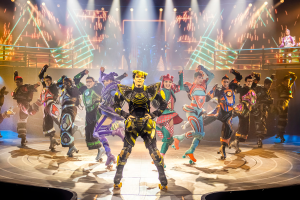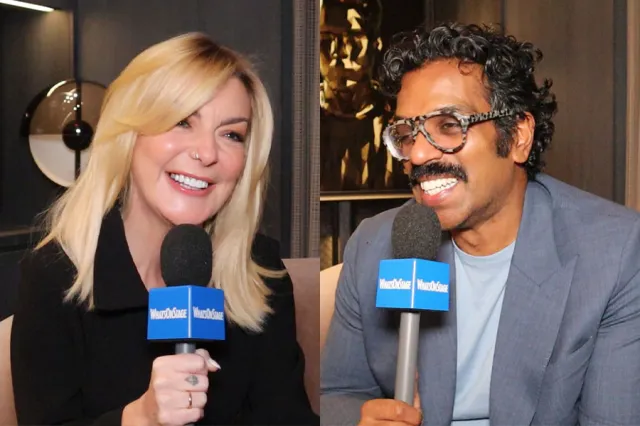Jo Caird: It’s Time to Talk about Disability Arts
Last week’s Arts Council England funding announcement meant
good news for some arts organisations and bad news for others. It would be
premature to attempt to draw too many conclusions from last week’s
news – the full effects of the cuts and boosts will become apparent over the
coming months and years – but ACE’s announcement does present us with a
valuable opportunity to consider the state of subsidised performing arts, and
in particular those sectors that receive little media attention the rest of the
time, such as disabled-led theatre and dance.
see their funding boosted significantly from 2012/13, including Deafinitely
Theatre (up 22.3%*), StopGAP Dance Company (up 71%), Kazzum (up 29.4%), Vital
Xposure (up 51.8%) and Mind the Gap (up 26.5%). For the companies in this
position (I talked to representatives of Deafinitely, StopGAP and Kazzum),
these increases mean being able to continue creating high-quality professional
work with deaf and disabled artists, nurturing the next generation of performers
and arts administrators, and taking their work to wider audiences via more
ambitious touring programmes.
Of course, there have also been cuts to the sector,
including an 100% cut to the disabled-led company, Zinc Arts, which will not
have its funding renewed next year. Many disability arts organisations and
organisations that work to increase accessibility to the arts will see real
term cuts of around 10% over the next funding period, including Graeae Theatre
Company (-9.4%), DV8 (-11.8%), Extant (-7.4%), Heart N Soul (-11%), Stage Text (-11%) and
VocalEyes (-11%).
Because
everyone has been preparing for the worst since the announcement in
October’s spending review that ACE would face an overall cut of 30%, the overwhelming mood among those
I’ve spoken has been relief. But in the wake of the 6.9% cut already sustained
by all the Regularly Funded Organisations for this coming year, these
companies will now be taking a serious look at where they can scale back and
save money.
Now, there’s a lot to be said for trimming the fat and
creating more streamlined and efficient organisations, but the disability arts
sector is so small (of the 2009/10 regularly funded portfolio only eight of 818
organisations were disabled-led, and only 47 organisations directed over 50% of
their programming towards disability-focused projects) that there’s a real
danger of doing irreparable damage to a vulnerable arts eco-system by stifling
growth now.
The organisations
I’ve been talking to have all remarked upon how well supported they’ve felt by
the Arts Council in recent years, even if some of them have been disappointed
by their funding situations in the past. This is great news and seems to
signify that ACE is serious in its commitment to the disability arts sector,
but companies cannot survive on support alone.
Deafinitely
Theatre’s executive director, Mark Sands, is delighted that his organisation
will be able to grow its work over the coming funding period, but has serious
concerns about some of the less obvious effects of cuts on the sector as a
whole. When companies are forced to fold or downsize their operations, there is
a knock-on effect on surviving organisations as artists and administrators have
fewer opportunities to gain experience in different roles across the sector.
This takes its toll on the bottom rungs of the ladder too with young people
suffering as organisations become less inclined to take on work experience placements.
Another
hidden effect of the cuts, as expressed by Tabitha Allum, executive director of
Stagetext, a charity that provides captioning to increase access to live
performance for deaf and hard of hearing people, is that “producing theatres
and companies who have also had a cut or standstill funding will think that
access provisions are an easy thing to slice off their budgets”.
Judy Dixey,
executive director of VocalEyes, is similarly concerned that ACE and other
funding bodies may not be taking access into consideration when it comes to
awarding grants to organisations. And in a worrying development that extends to
disabled people at work in the arts and beyond, it seems that officers at
Access to Work, the government agency which helps pay the additional costs that
arise because of disabled employees’ needs, are “questioning support costs in
ways that they have never done in the past”. This from Judith Kilvington,
executive director at Graeae.
These concerns aside, the mood in the disability arts sector is quietly optimistic: cuts have been
made and funding has been frozen, but administrators feel that for the moment
they are able to continue building on the progress of previous years to give
deaf and disabled artists and audiences the opportunities that have been denied
them for too long. Let’s hope they’re right.
* all percentages in real terms based on inflation
predictions












